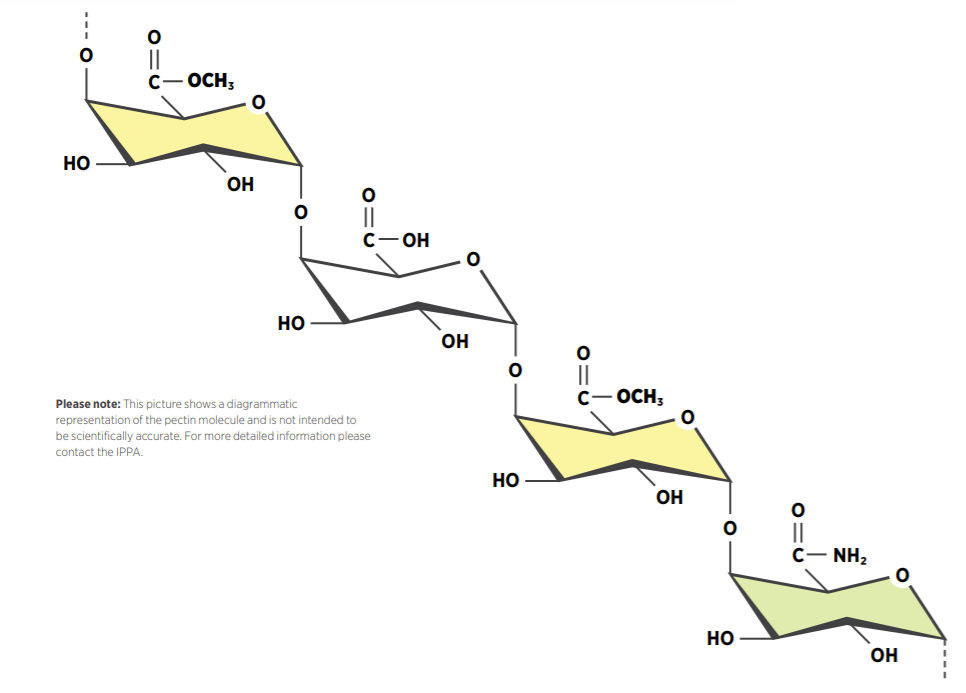
GALACTURONIC ACID
THE MOLECULAR STRUCTURE OF PECTIN
The main component of pectin is galacturonic acid, a natural sugar acid. it also contains other, neutral sugar molecules, including rhamnose, galactose and arabinose.
The galacturonic acid molecules form a ‘smooth’ backbone. The other sugar molecules branch off this backbone to create what are known as pectin’s ‘hairy regions’.
Pectin’s molecules are long and easily entangle with each other. In foods and beverages, this property is very useful because it results in a thickening of the product’s texture and improved stability.
PECTIN OCCURS NATURALLY IN PLANTS
In nature, pectin is a fibre found in the soft, non-woody parts of plants, where it helps to bind the plant’s cells together. the pectin used in food and beverage products is extracted from fruits such as apples, oranges, lemons and limes. pectin is a natural polymer, which means it contains large molecules comprised of many smaller molecular sub-units. pectin molecules are long and easily tangle with each other. in food and beverage products, this results in a thickening of the texture. pectin ingredients can be modified to create different degrees of thickening.
GALACTURONIC ACID
The main component of pectin – comprising at least 65% of its mass – is galacturonic acid, a natural sugar acid. In the plant cell wall, most of the galacturonic acid units are esterified and present as a methyl ester. They are linked together to form long molecular chains known as the homogalacturonic backbone.
Pectin also contains a range of other molecules
– neutral sugar molecules such as rhamnose, galactose, arabinose and lesser amounts of some other sugars.
These components branch off the homogalacturonic backbone like hairs, and for this reason these highly branched structures are referred to as pectin’s ‘hairy regions’.
When pectin is xtracted from the plant, most of these hairy regions disappear, leaving mainly the smooth galacturonic acid regions.
After extraction, the pectin may be further treated in order to formulate different types to be used in specific food & beverage products.
